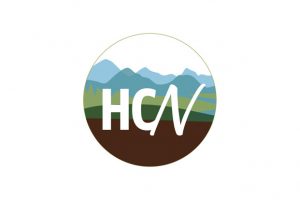FROZEN SHOULDER
Brrr…it’s getting cold outside. It seems like just the right timing to discuss something like Frozen Shoulder! This frustrating injury has mysterious beginnings and for the most part, unknown causes. This is a process called adhesive capsulitis that affects your shoulders. Often signs and symptoms creep up slowly then gradually get worse. Pain and stiffness are the predominant symptoms early on. Typically, only one shoulder is affected, but some people eventually develop this issue in each shoulder, up to 5 years apart. The process can take 1-3 years to resolve, as the shoulder dysfunction goes through stages called freezing, frozen and thawing.
Frozen shoulder has an insidious onset, but most commonly affects people between the ages of 40-60 years, in women more than men. There may be a preceding injury that causes you to rest or immobilize your shoulder for a length of time, or a traumatic injury such as a fracture or surgery. Moving your shoulder soon after surgery or immobilization is important to ward off frozen shoulder complications. Comorbidities, such as diabetes, thyroid issues, Parkinson’s and cardiac disease are at an increased risk for developing frozen shoulder.
The freezing stage involves pain with movement of the shoulder and the range of motion becomes limited. This can last from 2-9 months.
The frozen stage becomes stiffer, but the pain may lessen somewhat. This phase is often 4-6 months long.
The thawing stage is when the movement gradually starts to improve. This may take from 5-24 months.
The ball and socket style joint in the shoulder is called the glenohumeral joint. It is surrounded by strong connective tissue, called a capsule. Within the capsule, there is synovial fluid that helps to lubricate the joint and provide nutrition to surrounding tissue. When this capsule becomes stiff and thickened, adhesions in the connective tissue may form. This is what is called adhesive capsulitis. This stiffness squeezes out some of the synovial fluid within the joint. While this issue is local to the glenohumeral joint, the shoulder girdle is really a complex unit of the collarbone, shoulder blade, neck and upper back joints and ribs. All of these joints need to move in harmony as a unit for full shoulder range of motion. When the shoulder joint is restricted, compensatory movement patterns will develop that, over time, can cause pain in other areas.
The main treatment for frozen shoulder is range of motion exercises and keeping the surrounding joints moving optimally. Some might ask, “if this problem will resolve on it’s own, why bother with physiotherapy and exercises?” Great question! Rehab will involve learning the right stretches to do and how to stretch without compromising surrounding tissue structures. When a joint becomes stiff, muscles and fascia tissue tighten up as well. There are also nerves that pass through and around this tissue that will also lose flexibility. Nervous tissue (branches of peripheral nerves that originate at our spinal cord and extend down to our fingertips) does not like to be stretched. The sensation of “tight” nerves being stretched can be radiating pain, pins and needles, burning or numbness. So, while we need to stretch muscles, the capsule and the fascia, we need to protect the nerves along the upper limb. We also use manual techniques, modalities, stretches and strengthening exercises for all the joints involved in the “shoulder girdle” that I mentioned above. This may be joint mobilizations, manual soft tissue release, cupping, acupuncture or IMS techniques to loosen, mobilize and keep blood flowing to these other areas. Sometimes treatment may involve corticosteroid injections and rarely arthroscopic surgery.
The therapists at Bragg Creek Physiotherapy would love to help get you moving and keep that shoulder out of the cold this winter!
Jennifer Gordon (BSc.PT, BA Kin, AFCI)
Physiotherapist – Bragg Creek Physiotherapy
www.braggcreekphysio.com

























